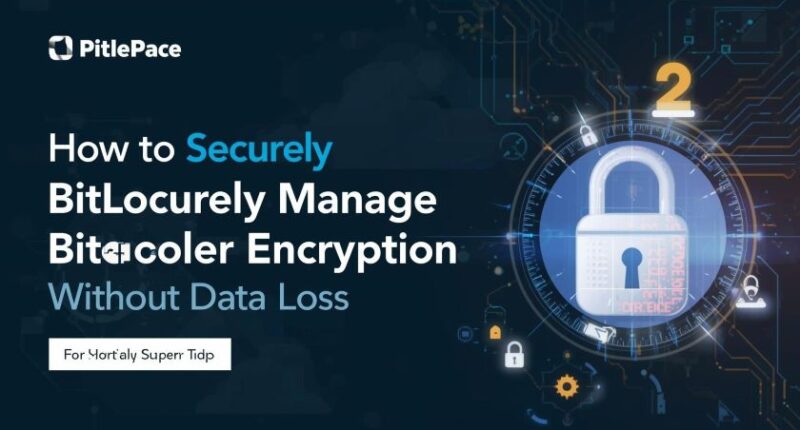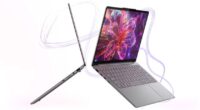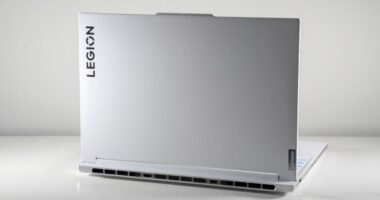BitLocker is one of Microsoft’s most powerful encryption tools, designed to protect sensitive data from unauthorized access. But what happens when you get locked out of your own drive? Whether it’s due to a lost recovery key, password issues, or Windows malfunction, being unable to access your files can be stressful.
This 2025 guide will show you how to bypass or remove BitLocker encryption without losing your data, safely and effectively.
What Is BitLocker and Why It Locks Your Drive
BitLocker is built into Windows (Pro, Enterprise, and Education editions) and encrypts your hard drive to prevent data theft. It works by linking your system drive with hardware components using TPM (Trusted Platform Module) or a password.
BitLocker may suddenly ask for a recovery key when:
-
You changed hardware (like motherboard or disk).
-
The Windows update altered your boot configuration.
-
You formatted or reset BIOS/UEFI settings.
-
The system detected unauthorized access.
When that happens, the drive becomes inaccessible — unless you unlock it using a recovery key.
Can You Bypass BitLocker Without Losing Data?
Yes — but only if the encryption process is complete and you still have access to either:
-
The BitLocker recovery key, or
-
The Microsoft account linked to your device.
⚠️ Important: BitLocker uses advanced encryption (AES 128 or 256-bit). There’s no legitimate way to “crack” it without your key. Any site claiming to unlock BitLocker instantly is likely a scam.
What you can do is safely remove BitLocker or recover your data using official tools and methods.
1. Recover BitLocker Key from Your Microsoft Account
If you’ve signed in to Windows using a Microsoft account, your BitLocker recovery key might already be stored online.
Here’s how to find it:
-
Sign in with the same account used on the locked PC.
-
Look for your device name in the list.
-
Copy or note the 48-digit recovery key.
-
Use it when prompted by Windows or the BitLocker recovery screen.
If successful, your drive will unlock without losing any data.
2. Use Command Prompt to Disable BitLocker Encryption
If you still have system access (logged in as administrator), you can turn off BitLocker using Command Prompt.
Steps:
-
Press Windows + X → choose Command Prompt (Admin) or Terminal (Admin).
-
Type this command:
This shows the encryption status of all drives.
-
To disable BitLocker on a drive (e.g., C:), type:
-
Wait until decryption is 100% complete.
This method removes BitLocker without erasing data, but it can take several hours depending on your drive size.
3. Unlock BitLocker Drive Using Recovery Key in File Explorer
If you can access the desktop but one of your drives (like D: or E:) is locked:
-
Open File Explorer.
-
Right-click the locked drive → click Unlock Drive.
-
Enter the 48-digit recovery key when prompted.
-
Once unlocked, go to:
Control Panel → System and Security → BitLocker Drive Encryption. -
Select Turn Off BitLocker for that drive.
Windows will start decrypting the drive — no files will be deleted.
4. Use BitLocker Recovery Tools (Windows RE Method)
If your PC doesn’t boot normally, you can still remove BitLocker through Windows Recovery Environment (WinRE).
Steps:
-
Boot your computer and press F8 or Shift + F11 (depending on brand) to open Advanced Startup Options.
-
Choose:
Troubleshoot → Advanced Options → Command Prompt -
In Command Prompt, type:
-
Once the decryption completes, restart your PC.
You’ll regain access without formatting or deleting files.
5. Backup Data Before Removing BitLocker
Even though most of these methods don’t erase data, it’s always smart to create a backup first.
If your drive is still accessible using recovery mode:
-
Use a USB external drive or cloud storage (like OneDrive or Google Drive).
-
Copy your important folders manually before decrypting.
If you can’t log in but can access your disk through another PC:
-
Remove your drive and connect it via a SATA-to-USB adapter.
-
Use your recovery key to unlock it on the new system.
-
Copy files safely.
6. Turn Off BitLocker via Control Panel (The Easy Way)
If BitLocker is active but you still have full access:
-
Open Control Panel → System and Security → BitLocker Drive Encryption.
-
Select Turn Off BitLocker next to the encrypted drive.
-
Confirm when prompted.
Windows will start decrypting the disk automatically. Once done, BitLocker protection is permanently removed.
7. Recover Data If You Lost the Key Completely
If you don’t have the recovery key and can’t access the Microsoft account, your options are limited — but not hopeless:
-
Check if your IT administrator or organization manages your device (they may have the key).
-
Look for any printed or saved recovery key (many users save it as a
.txtfile). -
Try system restore if BitLocker was recently enabled.
Unfortunately, there’s no tool that can unlock BitLocker without the recovery key — that’s the whole point of encryption. If no backup or key exists, even professional recovery software won’t decrypt the data.
How to Prevent Future BitLocker Lockouts
Once you regain access, take these steps to prevent future lockouts:
-
Backup your recovery key to multiple locations (Microsoft account, USB drive, and paper).
-
Avoid frequent BIOS/UEFI or hardware changes without suspending BitLocker first.
-
Enable TPM + PIN authentication for stronger protection.
-
Use System Restore Points before major Windows updates.
These small steps can save hours of frustration down the road.
Final Thoughts
BitLocker is an excellent security feature, but it can also cause headaches if you lose your recovery key or change your system settings. Thankfully, as this 2025 guide explains, there are safe ways to bypass or remove BitLocker encryption without losing data — using Microsoft’s built-in tools and recovery options.
Always remember: encryption = security, but backup = safety. Keep both in balance to protect your files and peace of mind.









